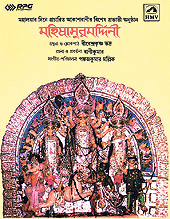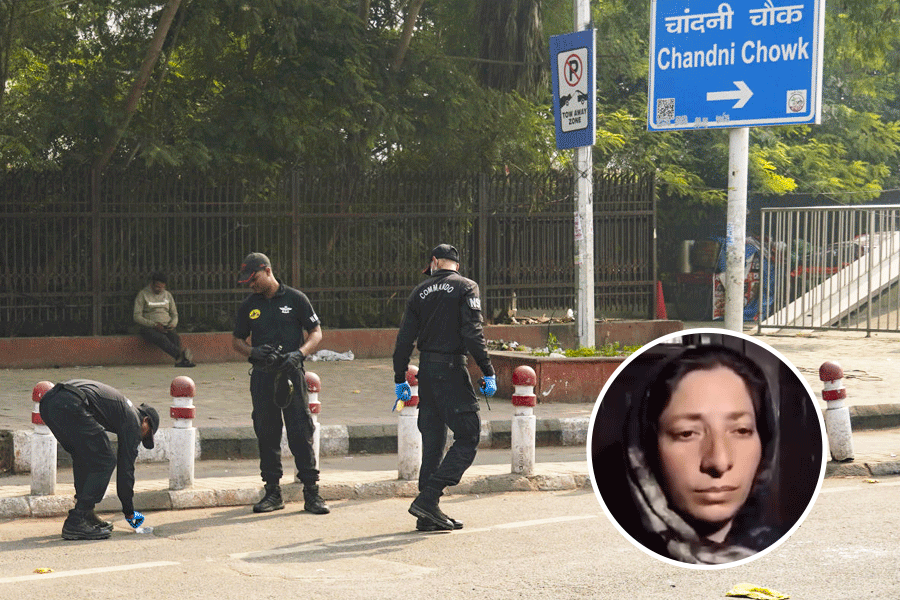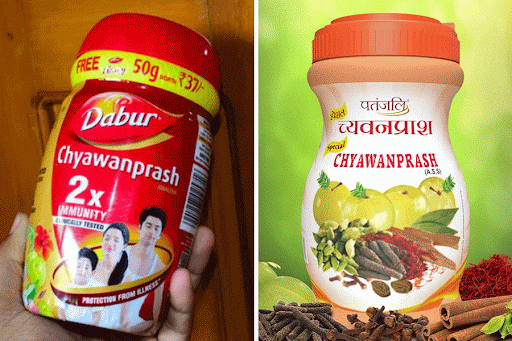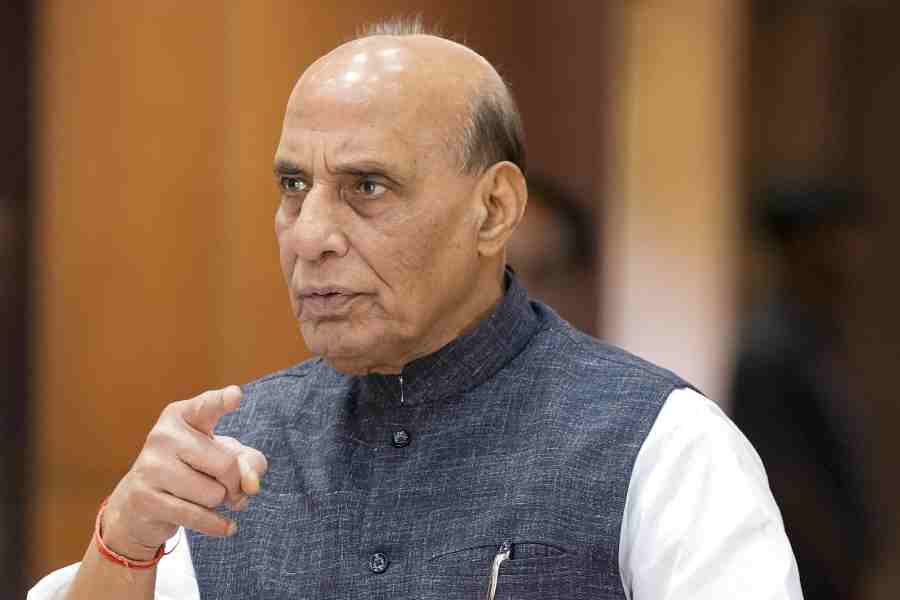 |
 |
 |
 |
 |
 |
 |
 |
 |
A friend of mine, who was hardly steeped in Bengali culture, would nonetheless insist that the only song that should be played at her funeral was the popular Rabindrasangeet: “Diner sheshe, ghumer deshe” but by none other than Pankaj Kumar Mallick.
It may have been sheer coincidence, but when I called Shobhan Pathak, a veteran transmission executive of All India Radio (AIR), on his mobile phone a couple of days ago, the caller tone that greeted my ear was the selfsame song that had been popularised by Pramatesh Barua’s hit film, Mukti, with Pankaj Mallick himself mouthing it onscreen.
Pathak had joined AIR in 1970 on the editorial staff of Betar Jagat, the widely-circulated magazine once brought out by AIR. Although he would not agree that Bengali songs of the golden age from the 1930s right up to 1970s are once again climbing the popularity charts, it is undeniable that honchos of the music and mobile phone industry have recognised the business potential of these enchanting ditties, and have started marketing them.
Had it not been so, how could Pathak opt for that antediluvian number as a caller tone? AIR has custom-made programmes of old adhunik (modern) songs like Purano Diner Gaan, Chirodiner Gaan and Gaaner Bhelay on FM Gold, and going by the number of phone calls they receive from listeners, these hits of yesteryear are still going strong. Bengalis can’t resist these cloyingly romantic, often lachrymose and lugubrious chansons about pure, unrequited love.
Hundreds tune in to Kichhu Katha Kichhu Gaan aired by veteran AIR presenter Mihir Bandopadhyay, 66, every Thursday afternoon as he manages to pack his programmes with valuable information on those who created each rare song. He says that in the mid-1940s, when permission was sought from the Gramophone Company to allow non-film basic songs to be aired, initially the company denied it. But once it greenlighted the proposal, disc sales went up.
“With the introduction of FM, static is almost absent from transmission, and so even young people cannot ignore the appeal of those golden voices of yesteryear. They may not have heard of KL Saigal but even if they catch a strain from his hits they are bound to react,” says Bandopadhyay.
Kabir Suman, who has recently released an album of his renderings of Himangshu Datta lyrics (his songs of lovelorn moon, swooning blossoms and autumn leaves were on every lip in the 1940s), says he did it out of love. But he dismisses the view that people have once again become interested in their musical heritage.
But it cannot be denied that whereas a few years ago, “remakes” were the rage, and certain singers such as Indranil Sen and Srikanta Acharya sang chartbusters of yesteryear, now people are going in for the originals digitally remastered.
Sandip Chaudhuri, the business unit controller (east) of Saregama India Ltd, HMV’s new avatar, admits that where Bangla songs are concerned album sales still matter, and Mahishasuramardini and Hemanta Mukherjee are still the top sellers from the East. Among the top 10 CDs are, besides the Mahalaya number and Hemanta, Pannalal Bhattacharjee (Mayer paye jaba) and Manna Dey. Hemanta, Chayanika (Shyamasangeet, Bengali modern songs), and Chiradiner Gaan (Shyamal Mitra and Manna Dey) figure among the top 10 MP3 albums.
At Starmark, Salil Choudhury, Hemanta, Sandhya Mukherjee (Chayanika), Ragashrayee and SD Burman (Hindustan Records) are toppers in the past 15 days. Bangla bands come nowhere here.
The much-hyped band revolution is stagnating, says Chaudhuri. CD sales are declining. “Bangla bands are so busy doing performances they have no time to relax and create fresh music. Their livelihood becomes shows,” he adds.
Saregama, however, has the option of dipping into its vast archives and releasing oldies that are goldies. And that is what it has been doing for some time. As Chaudhuri adds: “Up to the 1960s-70s, most recorded music belonged to us. There is a great need to make this archive available to everybody. The process of fully digitising the archive has begun.”
Chaudhuri reels out some figures. The company started recording songs in 1937 — for the first time in Asia — at its Dum Dum factory. The total number of published Bangla songs is 50,000, of which 30,000 are in the archive. Ten thousand of these have been digitised, a process which began in 2006. Saregama has websites from which songs can be downloaded, although these are in a trial phase and are facing teething problems, admits Chaudhuri. It will make consumer buying a lot simpler from the brand grid, where albums are classified by singer, lyricist, music director, banner and mood, and allow for greater freedom of choice. He adds that once the problems have been erased the sites will be publicised. Already this brand grid, currently in the physical format but which will be available online subsequently, accounts for 11 per cent of its current sales of old Hindi film songs.
A quick glance at the dusty shelves of an old music shop like CC Saha Ltd, which owns Hindustan Records, in Esplanade reveals that the songs of a Calcutta-based classical musician named Sachin Das (Motilal) have reincarnated as CDs. Hindustan Records, too, has released four-CD albums of KL Saigal and SD Burman, to name a few singers.
Indira Biswas, who is researching the evolution of Bengali music in the first half of the 20th Century, says although one can listen to classic Bengali songs once again, she would like recordings by Umapada Bhattacharya (a Nazrulgeeti storehouse), Ranu Som (late Pratibha Basu), Anadi Dastidar, Anupam Ghatak, Shaila Debi, and Chitta Roy to be resurrected. Maybe she is expecting too much.
There is also a renewed interest in the compositions of Mohiner Ghoraguli, the first Bangla band formed in 1970-71, that became a cult in certain youth circles. Currently, numbers such as “Prithibi” have rocked college campuses. But as Neil Mukherjee, nephew of late Gautam Chattopadhyay, one of the original members of Mohiner Ghoraguli, points out, the new hits have little to do with the original band. “Prithibi” was rendered by Krosswindz although few listeners are either aware or interested in that vital fact. Perhaps the “old gold” trend is just a fad. This moment is history for today’s children.
Project recap: the sound of music
 |
| Moushumi Bhowmik with singer Abdur Rahman Boyati in Dhaka in 2006 |
Bengal’s vast repository of folk songs is depleting fast. Moushumi Bhowmik, who herself is blessed with a deep and melodious voice, composes her own lyrics and has a regular fan following, has taken upon herself the task of recording the songs of longing and parting (biraha) that were once heard in the villages of Bengal and still in rural fairs.
“It was a personal journey. My first album in 1994 carried some folk signatures. I realised I was not doing anything different. Urban art songs have always built on folk and classical material,” says Bhowmik. “Unbeknown to me, both kirtananga and Western classical have entered my work although I never really learnt either,” she adds.
Her journey towards folk began in a more concentrated manner while researching in Bangladesh for a book titled Zenana Mehfil for the publishing house Stree. She discovered a thriving music industry that caters mostly to the mofussils based on kirtan, bichhed, pallagaan, jarigaan, Islamic pallagaan, boyati and baul.
From 1995-96 she began to listen to more of this music. When she lived in London for some years, she felt like an exile and pined for her homeland. That is when she realised the huge scope and dimension of the research she had undertaken, as geographical and language borderlines began to melt.
Was she interested in Bengali songs or songs of Bengal? She realised how songs travel, and with a grant from the Indian Foundation for the Arts she began her documentation project and collected 75-80 hours of music and interviews. The excellent recording was done by Sukanta Majumdar, who was an integral part of the journey.
She did not want the material to be at the Archive and Research Centre for Ethnomusicology, Gurgaon, and the World and Traditional (Music) Section of the British Library alone. Then it would be as good as dead. She wished to build a travelling archive, make several copies, and thereby challenge the whole concept of archiving itself by taking it back to its field.
“So I am gradually moving towards travelling, interacting with people and spreading the music in a different way. The work is becoming bigger and a travelogue is a possibility,” says Bhowmik. During her travels across the land she learnt to listen to and analyse sound. “The project was for audio documentation but gradually I realised the radical importance of sound. Sound opens up the landscape of imagination,” says Bhowmik. She discovered the subtle differences in style between that of the predominant Pratima Barua in Gouipur and that of Rahima Kalita of Krishnai in Goalpara. She discovered amazing singers, and in a couple of instances recorded their swan song, quite literally.










